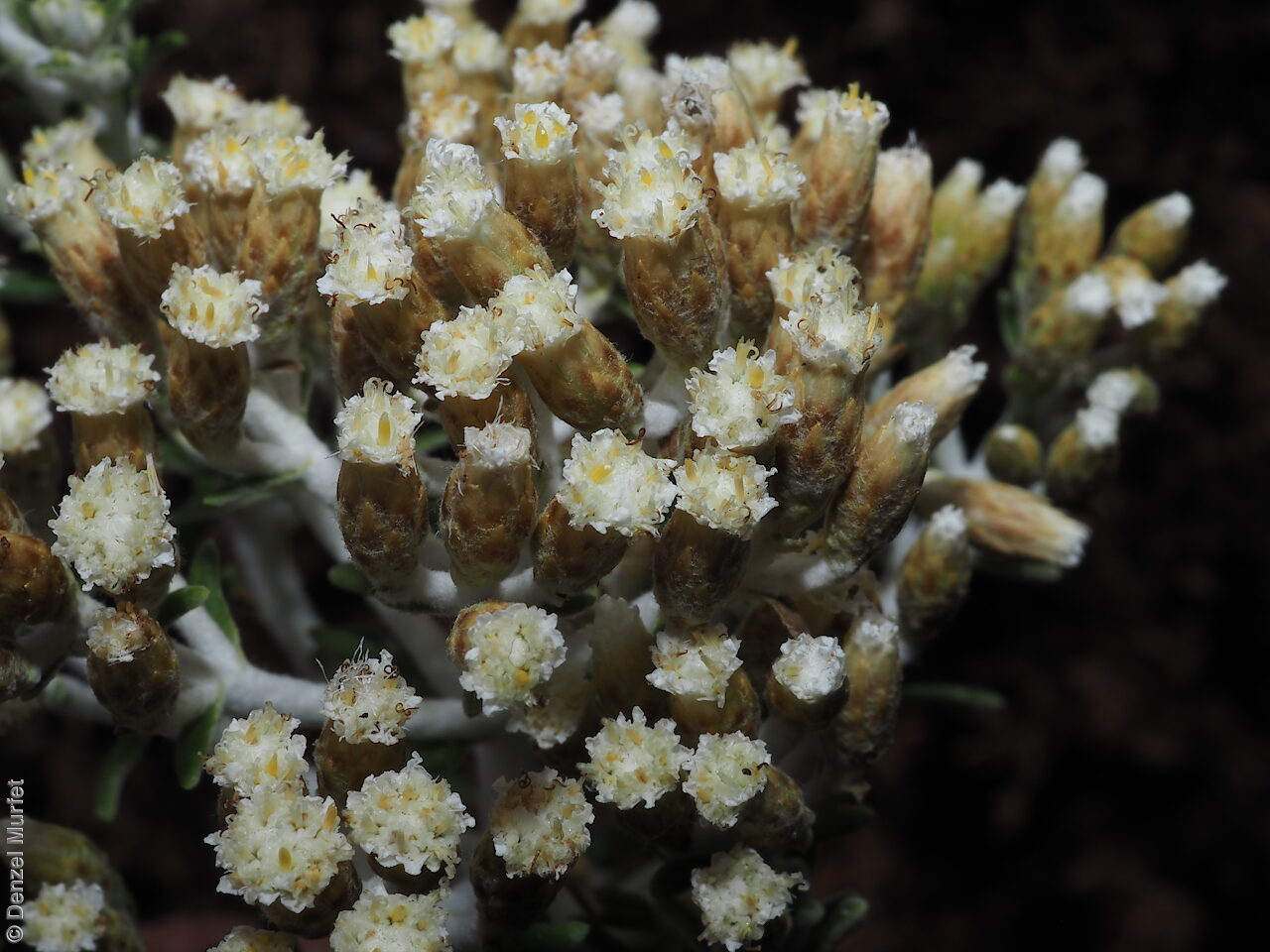


















Botanical art
Prior names
Chrysocoma cinerea
Ozothamnus cinereus
Helichrysum gunnii ssp. paralium
Helichrysum cinereum, partly
Helichrysum paralium
Common names
Coast Bush-everlasting
Coast Everlasting
Etymology
Ozothamnus, from the Greek 'ozo', meaning to smell and 'thamnos,' meaning shrub, alluding to the fragrant foliage when crushed. Turbinatus, from Latin meaning top-shaped.
Distribution and status
Found along the coast on the Fleurieu Peninsula and the South-east in South Australia, growing on exposed dunes and cliffs. Also found in New South Wales, Victoria and Tasmania. Native. Common in South Australia. Uncommon in New South Wales. Common in the other States.
Herbarium regions: Southern Lofty, South Eastern
AVH map: SA distribution map (external link)
Plant description
Dense spreading shrub to 2 m high with branchlets covered in dense cottony hairs. Leaves, spreading, linear, to 25 mm long and 2 mm wide; glabrous above with densely cottony hairs beneath; whitish or yellow-resinous; apex acute to obtuse; margins revolute. Inflorescences hemispherical, to 5 cm diameter, with 20�40, dull-yellow flowers. Flowering between January and March. Fruits are dense cream- yellow heads. Seeds are brown ovoid seed to 1 mm long and 0.5 mm wide, covered with yellow resin and scattered short white hairs, with a very long pappus at one end. Seed embryo type is spatulate, fully- developed.
Seed collection and propagation
Collect seeds between April and May. Collect mature seed heads turning a cream-brown. Place the heads in a tray and leave to dry for 1-2 weeks, then rub the heads gently with your hands to dislodge the seeds. Use a sieve to separate the unwanted material. Store the seeds with a desiccant such as dried silica beads or dry rice, in an air tight container in a cool and dry place.
| Location | No. of seeds (weight grams) | Number of plants | Date collected | Collection number Collection location | Date stored | % Viability | Storage temperature |
|---|---|---|---|---|---|---|---|
| BGA MSB | 9,400 (8.07 g) 9,400 (8.07 g) | 100+ | 19-May-2004 | DJD10 Southern Lofty | 23-Mar-2006 | N/C | +5°C, -18°C |
Number of plants: This is the number of plants from which the seeds were collected.
Collection location: The Herbarium of South Australia's region name.
% Viability: Percentage of filled healthy seeds determined by a cut test or x-ray.